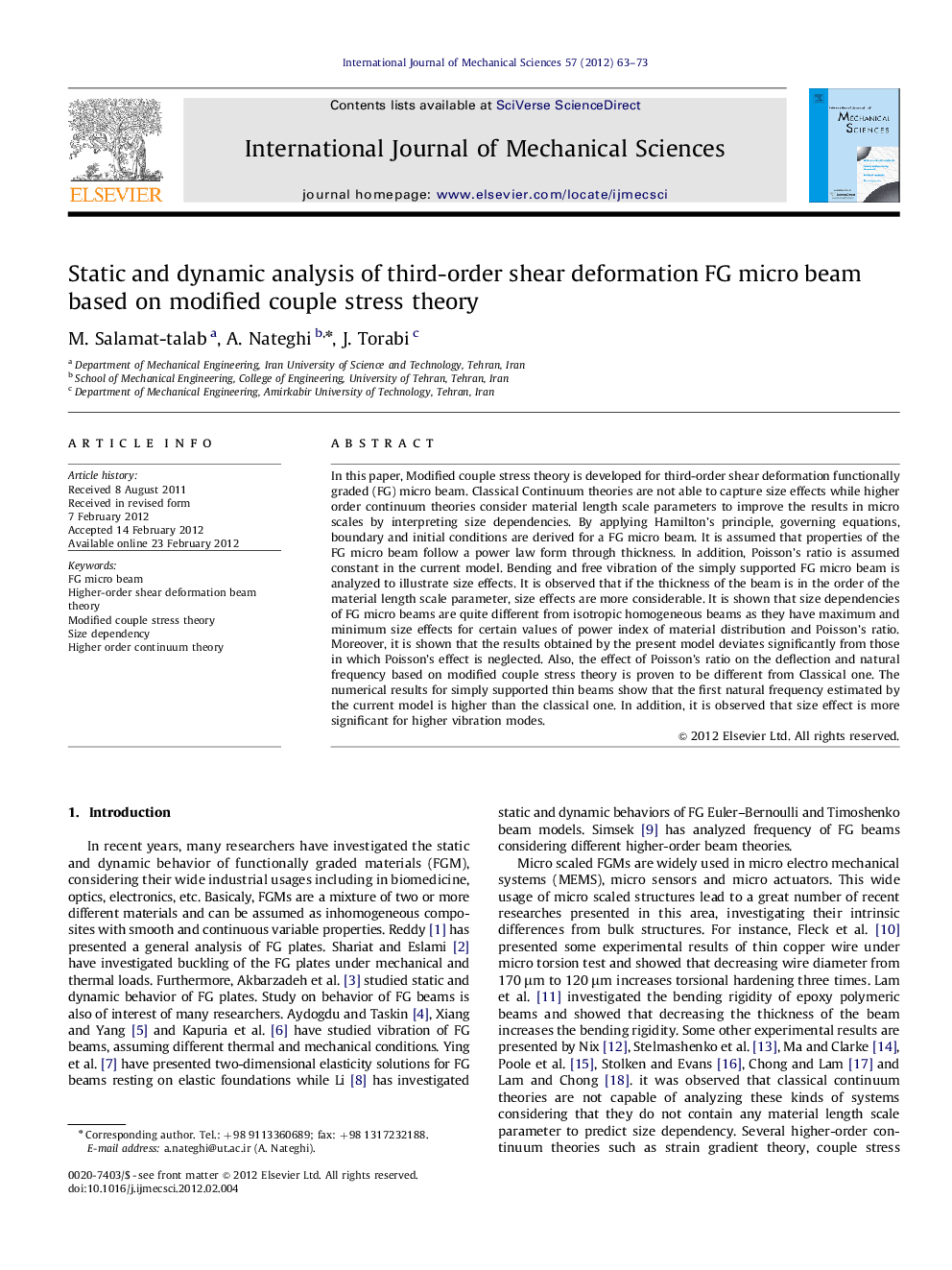| Article ID | Journal | Published Year | Pages | File Type |
|---|---|---|---|---|
| 783859 | International Journal of Mechanical Sciences | 2012 | 11 Pages |
In this paper, Modified couple stress theory is developed for third-order shear deformation functionally graded (FG) micro beam. Classical Continuum theories are not able to capture size effects while higher order continuum theories consider material length scale parameters to improve the results in micro scales by interpreting size dependencies. By applying Hamilton’s principle, governing equations, boundary and initial conditions are derived for a FG micro beam. It is assumed that properties of the FG micro beam follow a power law form through thickness. In addition, Poisson’s ratio is assumed constant in the current model. Bending and free vibration of the simply supported FG micro beam is analyzed to illustrate size effects. It is observed that if the thickness of the beam is in the order of the material length scale parameter, size effects are more considerable. It is shown that size dependencies of FG micro beams are quite different from isotropic homogeneous beams as they have maximum and minimum size effects for certain values of power index of material distribution and Poisson’s ratio. Moreover, it is shown that the results obtained by the present model deviates significantly from those in which Poisson's effect is neglected. Also, the effect of Poisson’s ratio on the deflection and natural frequency based on modified couple stress theory is proven to be different from Classical one. The numerical results for simply supported thin beams show that the first natural frequency estimated by the current model is higher than the classical one. In addition, it is observed that size effect is more significant for higher vibration modes.
► Modified couple stress theory based on third order shear deformation theory for FG micro beams is developed. ► Size dependencies of FG micro beams are quite different from isotropic homogenous beams. ► Effect of Poisson’s ratio on beam behavior based on the present model differs from classical one. ► Size effect on higher vibration modes is more significant than the first mode.
